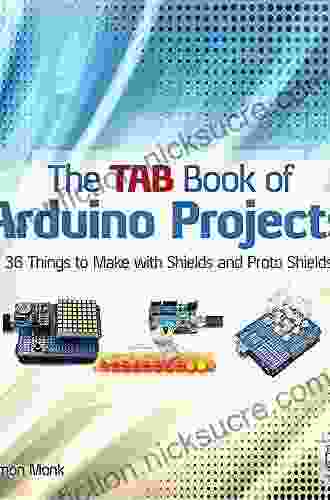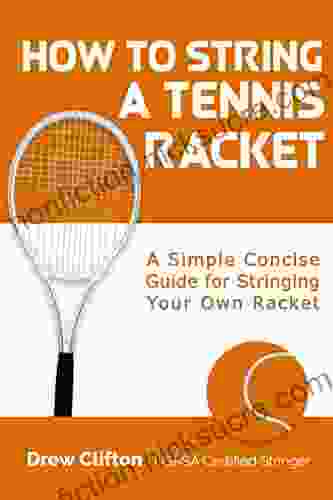The Art of Stringing a Tennis Racket: A Comprehensive Guide for Optimal Performance

Tennis rackets are intricate pieces of equipment that require proper care and maintenance to ensure optimal performance on the court. One of the most important aspects of racket maintenance is stringing, which involves threading strings through the frame in a specific pattern to create a playable surface. While professional stringers can perform this task with expertise, it is possible for tennis enthusiasts to learn how to string their own rackets with the right tools and knowledge. This comprehensive guide will provide a step-by-step walkthrough of the tennis racket stringing process, empowering you to achieve the perfect string tension and pattern for your playing style.
Materials Required
Before embarking on the stringing process, ensure you have all the necessary materials at your disposal. The following items are essential for successful racket stringing:
- Tennis racket
- Stringing machine
- Tennis strings (type and gauge depending on your preference)
- String tension gauge
- String cutter
- Awl
- Needle-nose pliers
Step-by-Step Stringing Instructions
Prepare the Racket: Begin by removing the old strings from the racket frame using an awl or string cutter. Ensure you remove all remnants of the old strings to provide a clean surface for the new strings.
How to String a Tennis Racket: A Simple Concise Guide for Stringing your own Racketby Drew Clifton4.2 out of 5
Language : English File size : 8586 KB Text-to-Speech : Enabled Screen Reader : Supported Enhanced typesetting : Enabled Word Wise : Enabled Print length : 122 pages Lending : Enabled Set Up the Stringing Machine: Assemble the stringing machine according to the manufacturer's instructions. Adjust the tension head to the desired string tension for your playing style. Refer to the string manufacturer's recommendations for appropriate tension ranges.
Start Stringing: Thread the starting string through the first hole of the top-left corner of the frame and tie it off securely using an overhand knot. Double-check the knot to ensure it is tight and will not slip.
Create the Cross Pattern: Guide the string across the frame and through the opposite hole in the upper portion of the frame and pull it to create the first cross-string. Tie the string off at the starting hole. Proceed to string the remaining cross-strings by alternating between the upper and lower holes on each side of the frame.
Finish with the Mains: Once all the cross-strings are in place, string the main strings by threading them through the holes on the outside of the frame. Tension the strings as you go, ensuring each string has the same amount of tension.
Tie Off the Racket: After all the strings are installed, tie them off securely using an overhand knot at the last hole. Trim any excess string using a string cutter.
Choosing the Right String
The type and gauge of string you choose will significantly impact the performance of your racket. Here is an overview of the different string options available:
Natural Gut: Made from animal intestines, natural gut strings offer excellent power, feel, and durability. However, they are more expensive and require more frequent restringing.
Synthetic Gut: A more affordable alternative to natural gut, synthetic gut strings provide a balance of power, control, and durability.
Multifilament: Constructed from multiple nylon filaments, multifilament strings offer excellent comfort, shock absorption, and playability. They are ideal for players seeking a soft feel and reduced arm strain.
Polyethylene: Also known as "poly" strings, polyethylene strings offer exceptional spin, control, and durability. However, they can be more demanding on the arm due to their stiffer texture.
The gauge of the string refers to its thickness. Thicker strings (lower gauge) offer more power and durability, while thinner strings (higher gauge) provide more control and spin.
Determining the String Tension
String tension is a crucial factor that affects the performance of your tennis racket. The higher the tension, the stiffer the strings will be, resulting in more control but less power. Conversely, lower tension strings provide increased power and feel but less control.
The optimal string tension depends on several factors, including:
Playing Style: Aggressive players who rely on power may prefer lower tension strings, while control-oriented players may opt for higher tension strings.
Racket Head Size: Larger head sizes require lower tension strings to generate sufficient power.
String Type: Different string types have recommended tension ranges. Refer to the string manufacturer's guidelines for optimal tension.
Tips for Successful Stringing
Practice on an Old Racket: Before attempting to string your main racket, practice on an old or discarded racket to gain experience and avoid any mishaps.
Use a Quality Stringing Machine: Invest in a reliable stringing machine that provides precise tension control.
Follow Tension Recommendations: Adhere to the recommended tension ranges for your playing style and string type.
Check for Errors: Regularly inspect the racket while stringing to ensure all strings are properly tensioned and tied off securely.
Restring Regularly: The frequency of restringing depends on how often you play and the type of strings used. Generally, restringing every 3-6 months is recommended for optimal performance.
Stringing a tennis racket may seem like a daunting task at first, but with the right tools and technique, it can be a rewarding experience that enhances the performance of your racket and your overall game. By following the step-by-step instructions and considering the factors discussed in this guide, you can achieve the perfect string tension and pattern for your playing style. Remember to practice on an old racket, calibrate your machine accurately, and use high-quality strings for optimal results.
4.2 out of 5
| Language | : | English |
| File size | : | 8586 KB |
| Text-to-Speech | : | Enabled |
| Screen Reader | : | Supported |
| Enhanced typesetting | : | Enabled |
| Word Wise | : | Enabled |
| Print length | : | 122 pages |
| Lending | : | Enabled |
Do you want to contribute by writing guest posts on this blog?
Please contact us and send us a resume of previous articles that you have written.
 Fiction
Fiction Non Fiction
Non Fiction Romance
Romance Mystery
Mystery Thriller
Thriller SciFi
SciFi Fantasy
Fantasy Horror
Horror Biography
Biography Selfhelp
Selfhelp Business
Business History
History Classics
Classics Poetry
Poetry Childrens
Childrens Young Adult
Young Adult Educational
Educational Cooking
Cooking Travel
Travel Lifestyle
Lifestyle Spirituality
Spirituality Health
Health Fitness
Fitness Technology
Technology Science
Science Arts
Arts Crafts
Crafts DIY
DIY Gardening
Gardening Petcare
Petcare Paul Nash
Paul Nash Katlin Middleton
Katlin Middleton Shelly Crane
Shelly Crane Elizabeth Fein
Elizabeth Fein Dermot Moran
Dermot Moran Mohamed F El Hewie
Mohamed F El Hewie Bill Patton
Bill Patton Tania Israel
Tania Israel Law School Admission Council
Law School Admission Council Kevin Dutton
Kevin Dutton Yuri Ulengov
Yuri Ulengov Thomas C Foster
Thomas C Foster Chris Riddell
Chris Riddell Theodora Papatheodorou
Theodora Papatheodorou Haylie Duff
Haylie Duff S Meloni M D
S Meloni M D Tim Harford
Tim Harford William H Shellenberger
William H Shellenberger Tamara Ferguson
Tamara Ferguson Chris Fitch
Chris Fitch Team Golfwell
Team Golfwell Reemus Boxing
Reemus Boxing Paddy Dillon
Paddy Dillon Christopher Clarey
Christopher Clarey Roald Amundsen
Roald Amundsen Mark Hansen
Mark Hansen Mindy Mcginnis
Mindy Mcginnis Stefanie Reinhold
Stefanie Reinhold Dan Reeder
Dan Reeder Marlo Payne Thurman
Marlo Payne Thurman Joan Naidorf
Joan Naidorf Irene Mchenry
Irene Mchenry Katie Schnack
Katie Schnack Kevin Estela
Kevin Estela John Galeano
John Galeano Robin Donovan
Robin Donovan Tracy Donegan
Tracy Donegan Robert Macfarlane
Robert Macfarlane Sam Chenery Morris
Sam Chenery Morris Sonja Renee
Sonja Renee Rachel Simmons
Rachel Simmons Nicholas Sparks
Nicholas Sparks Janna Cawrse Esarey
Janna Cawrse Esarey Ron Kaspriske
Ron Kaspriske Scott Lanning
Scott Lanning Jo A Kaucher
Jo A Kaucher Richard E Silverman
Richard E Silverman Charmaine Mckissock
Charmaine Mckissock John T Moore
John T Moore Jeff Carreira
Jeff Carreira Marie Viljoen
Marie Viljoen Michelle D Swaney
Michelle D Swaney Bob Bell
Bob Bell Margot De Sevo
Margot De Sevo Susan Campbell Bartoletti
Susan Campbell Bartoletti Dave King
Dave King Chris Donaldson
Chris Donaldson Bill Fawcett
Bill Fawcett Katy Madison
Katy Madison Drew Clifton
Drew Clifton Cgp Books
Cgp Books Gareth Thomas
Gareth Thomas Gish Jen
Gish Jen Sport Hour
Sport Hour Jennifer M Sparks
Jennifer M Sparks Johann Weyer
Johann Weyer Arrl Inc
Arrl Inc N J Enfield
N J Enfield Randall Bell
Randall Bell Sir John Franklin
Sir John Franklin Clara Dehlin
Clara Dehlin James Stewart
James Stewart Patrick Sweeney
Patrick Sweeney Louise Greenspan
Louise Greenspan Paula Derr
Paula Derr Cecil Harris
Cecil Harris William Wasserman
William Wasserman Mark Golds
Mark Golds Paul Carus
Paul Carus Theodore Gray
Theodore Gray Mike Swedenberg
Mike Swedenberg Malcolm Pearson
Malcolm Pearson Alejandro Sequera
Alejandro Sequera Mary Catherine Bateson
Mary Catherine Bateson Matt Brown
Matt Brown John Weir
John Weir Marsha Vanwynsberghe
Marsha Vanwynsberghe Keith Gave
Keith Gave Nancy Cartwright
Nancy Cartwright Elizabeth Grosz
Elizabeth Grosz David J Hand
David J Hand Klaus Dodds
Klaus Dodds Michael Medved
Michael Medved Mike White
Mike White Amanda Phillips
Amanda Phillips Kenneth Rideout
Kenneth Rideout Glenn Doman
Glenn Doman Isle Osaki
Isle Osaki Chris Gosden
Chris Gosden Anton Szandor Lavey
Anton Szandor Lavey Grant Andrews
Grant Andrews Darren Levine
Darren Levine Randy Smith
Randy Smith Glen Heggstad
Glen Heggstad Stephanie Dueger
Stephanie Dueger Larry Flax
Larry Flax Maria Del Russo
Maria Del Russo Cliff Harris
Cliff Harris Dr Robert Demaria
Dr Robert Demaria Jason Reynolds
Jason Reynolds Sara Woods
Sara Woods David J Cox
David J Cox Mike Schultz
Mike Schultz Ronojoy Sen
Ronojoy Sen Pastor Ahyh
Pastor Ahyh Sarah Bennett
Sarah Bennett Karl Polanyi
Karl Polanyi Dan Flores
Dan Flores Misty Jordyn
Misty Jordyn Erika Stalder
Erika Stalder Amanda Sterczyk
Amanda Sterczyk Peter Townsend
Peter Townsend Patrick Garbin
Patrick Garbin Johnjoe Mcfadden
Johnjoe Mcfadden Susan K Grove
Susan K Grove Martina Sprague
Martina Sprague Denise Alvarado
Denise Alvarado Hal Roth
Hal Roth W H C Bassetti
W H C Bassetti Kevin Muramatsu
Kevin Muramatsu Delia Owens
Delia Owens Christopher Ives
Christopher Ives Jay Hoffman
Jay Hoffman Stephanie Greer
Stephanie Greer Mark Bacera
Mark Bacera Natalie C Parker
Natalie C Parker Curtis Retherford
Curtis Retherford Frank Runles
Frank Runles Duncan Wells
Duncan Wells Cheryl Kimball
Cheryl Kimball Jaime Aron
Jaime Aron Ryan Skinner
Ryan Skinner Ronald Wright
Ronald Wright James O Aldrich
James O Aldrich Steven D Fleming
Steven D Fleming June Alexander
June Alexander Michelle Cree
Michelle Cree Keith Ryan Cartwright
Keith Ryan Cartwright Todd Eklof
Todd Eklof Baz Thompson
Baz Thompson Rob Neyer
Rob Neyer Celeste Shally
Celeste Shally Marie Louise
Marie Louise Hal Herzog
Hal Herzog Georg Rauch
Georg Rauch Lisa Gache
Lisa Gache Steve Hagen
Steve Hagen Erika Buenaflor M A J D
Erika Buenaflor M A J D Maryse Cardin
Maryse Cardin Dr Sandeep Jatwa
Dr Sandeep Jatwa Ross Campbell
Ross Campbell Conrad Fischer
Conrad Fischer Simon Monk
Simon Monk Tim Cammisa
Tim Cammisa Bill Douglas
Bill Douglas Lynette Noni
Lynette Noni Charlie Walker
Charlie Walker King Heiple
King Heiple Kindle Edition
Kindle Edition Patrice Karst
Patrice Karst Joel Greenberg
Joel Greenberg Elizabeth Swire Falker
Elizabeth Swire Falker Heather A Smith
Heather A Smith Dodie Smith
Dodie Smith Helen Barry Siragusa
Helen Barry Siragusa Rachel Morgan
Rachel Morgan Daniel Loxton
Daniel Loxton Creek Stewart
Creek Stewart David Goudsward
David Goudsward James Rushforth
James Rushforth Les Stroud
Les Stroud Sean Herman
Sean Herman Jay Walden
Jay Walden Jason Frye
Jason Frye Stephanie Clarke
Stephanie Clarke Hakim Isler
Hakim Isler Suzanne Young
Suzanne Young Havilah Babcock
Havilah Babcock Ethan Bezos
Ethan Bezos Christopher Pike
Christopher Pike Rough Guides
Rough Guides Frederick Courteney Selous
Frederick Courteney Selous Dina Rudick
Dina Rudick Jeff Henigson
Jeff Henigson Hwei P Hsu
Hwei P Hsu Shauna L Shapiro
Shauna L Shapiro Ryan Robert
Ryan Robert Victoria E Kress
Victoria E Kress Stella Cottrell
Stella Cottrell Viviana Gyori
Viviana Gyori Michael Digiacomo
Michael Digiacomo Larry Olmsted
Larry Olmsted Simone Abram
Simone Abram Glinda Porter
Glinda Porter Patrick Vinton Kirch
Patrick Vinton Kirch Susan Brink
Susan Brink Scott O Morton
Scott O Morton Quad Webb
Quad Webb Samuel T Heart
Samuel T Heart Karen Horney
Karen Horney Jens Meyer
Jens Meyer John Allen
John Allen Dominic O Brien
Dominic O Brien Treehouse Books
Treehouse Books Julia Miele Rodas
Julia Miele Rodas Craig Pittman
Craig Pittman Johannes W Rohen
Johannes W Rohen Charlie Francis
Charlie Francis Frank Close
Frank Close Christophe Morin
Christophe Morin R A Palmer
R A Palmer Kahlil Gibran
Kahlil Gibran Harry Bruinius
Harry Bruinius Doug Gaskill
Doug Gaskill Jules Verne
Jules Verne Megan Miller
Megan Miller Marie Mance
Marie Mance Jennifer Kolari
Jennifer Kolari Evy Poumpouras
Evy Poumpouras J Franklin Snyder
J Franklin Snyder Miles Howard
Miles Howard National Fastpitch Coaches Association
National Fastpitch Coaches Association Emma Griffin
Emma Griffin Kati Kleber
Kati Kleber Martin E P Seligman
Martin E P Seligman Catherine Carrigan
Catherine Carrigan Blake Dresden
Blake Dresden Stephanie Evans
Stephanie Evans Dan Buettner
Dan Buettner Rebecca Rather
Rebecca Rather Vassos Alexander
Vassos Alexander Esther M Toddler
Esther M Toddler Asato Asato
Asato Asato Ron Maly
Ron Maly Chloe Howard
Chloe Howard Brock Eide
Brock Eide Grace Mccready
Grace Mccready James Morgan Ayres
James Morgan Ayres Nitin Guptta
Nitin Guptta Dave Canterbury
Dave Canterbury Sjaak Laan
Sjaak Laan Howard Markel
Howard Markel John Hoskison
John Hoskison Tara Isabella Burton
Tara Isabella Burton Mantak Chia
Mantak Chia Maggie Oakes
Maggie Oakes Richard Louv
Richard Louv Reid Henrichs
Reid Henrichs John Volanthen
John Volanthen Joseph A Mccullough
Joseph A Mccullough John R Weisz
John R Weisz Patrick Mcallister
Patrick Mcallister Tricia Levenseller
Tricia Levenseller Richard S Westfall
Richard S Westfall Cindy Ross
Cindy Ross Pavla Kesslerova
Pavla Kesslerova Ross Bentley
Ross Bentley Sydney George Fisher
Sydney George Fisher Tessa Broad
Tessa Broad Zoe Mckey
Zoe Mckey Rachel Dickinson
Rachel Dickinson Karla Marie Williams
Karla Marie Williams Dr Rex S Vanderwood
Dr Rex S Vanderwood Nancy Carter Crump
Nancy Carter Crump Chrissie Wellington
Chrissie Wellington Jonathan Beverly
Jonathan Beverly Christian Bates
Christian Bates Len Mcdougall
Len Mcdougall Margalis Fjelstad
Margalis Fjelstad Genie Reads
Genie Reads Don Casey
Don Casey Marlene Laruelle
Marlene Laruelle Lane Rebelo
Lane Rebelo Sean Fister
Sean Fister Leland Chant
Leland Chant Preston Peet
Preston Peet Daniel Lenihan
Daniel Lenihan Wendell Berry
Wendell Berry Michael Banton
Michael Banton Peter Canning
Peter Canning Jon Sherman
Jon Sherman Stephen R Bown
Stephen R Bown Robert W Sussman
Robert W Sussman Henry Hatcher
Henry Hatcher Kailyn Lowry
Kailyn Lowry Patrick Schulte
Patrick Schulte Michael Paduch
Michael Paduch David Grant Noble
David Grant Noble Mariamelys Yanez
Mariamelys Yanez Catherine Legrand
Catherine Legrand Dale H Schunk
Dale H Schunk Heather Jacobson
Heather Jacobson Steve Brill
Steve Brill Michael J Bennett
Michael J Bennett Ken Setterington
Ken Setterington John Mccollister
John Mccollister Jay Mccullough
Jay Mccullough Dave Wilson
Dave Wilson Lee A Wilkinson
Lee A Wilkinson John H Hanson
John H Hanson Sophie Delaplaine
Sophie Delaplaine Ken Palmer
Ken Palmer Robin Dunbar
Robin Dunbar Louis Turjanen
Louis Turjanen Terence Mclaughlin
Terence Mclaughlin Schuld
Schuld Jenny Han
Jenny Han Martin W Ball
Martin W Ball Brother Nero
Brother Nero Nelson Simon
Nelson Simon Tony J Bell
Tony J Bell Nancy Northcott
Nancy Northcott Peterson S
Peterson S Ronald Williams
Ronald Williams Jack Burns
Jack Burns Creative Task
Creative Task S L Watson
S L Watson Daniel Holzman
Daniel Holzman Doc Severson
Doc Severson Tahir Shah
Tahir Shah Marlo Gottfurcht Longstreet
Marlo Gottfurcht Longstreet Chris Jake
Chris Jake Nick Fragel
Nick Fragel Greg Stucky
Greg Stucky Edward Bulwer Lytton
Edward Bulwer Lytton John Flanagan
John Flanagan Stuart Mcrobert
Stuart Mcrobert Lina Chang
Lina Chang Jacques Steinberg
Jacques Steinberg Rachel Swaby
Rachel Swaby Jennifer Mind
Jennifer Mind Laurie Seale
Laurie Seale Lester Kaufman
Lester Kaufman Ian Wilson
Ian Wilson Jacqueline Melvin
Jacqueline Melvin Joanna Grace
Joanna Grace Nancy K O Leary
Nancy K O Leary Kristin Cashore
Kristin Cashore Trevor Thomas
Trevor Thomas Kenny Dill
Kenny Dill Mike Kephart
Mike Kephart Elsevier
Elsevier Patrick Linsenmeyer
Patrick Linsenmeyer Kathryn Harkup
Kathryn Harkup Christopher Scott
Christopher Scott Jenna Helland
Jenna Helland Nick Muxlow
Nick Muxlow Sam Jarman
Sam Jarman Jennifer Ward
Jennifer Ward Jasper Kent
Jasper Kent Danielle Paige
Danielle Paige G Bruce Knecht
G Bruce Knecht John E Phillips
John E Phillips Laura Sebastian
Laura Sebastian Judy Bartkowiak
Judy Bartkowiak Steve Jamison
Steve Jamison Kevin Neary
Kevin Neary William Macaskill
William Macaskill Becky Kopitzke
Becky Kopitzke Iman Hami
Iman Hami Michael Plymel
Michael Plymel J Phillip Stonewater
J Phillip Stonewater Sammy Franco
Sammy Franco John Trent
John Trent Jessica Ashley
Jessica Ashley Daniel S Newman
Daniel S Newman Delaney Ruston
Delaney Ruston Stephen J Bavolek
Stephen J Bavolek James F Clapp
James F Clapp Kate Pankhurst
Kate Pankhurst Michael J Leahy
Michael J Leahy Richard Bronson
Richard Bronson Print Replica Kindle Edition
Print Replica Kindle Edition Russ Harris
Russ Harris Jim Al Khalili
Jim Al Khalili Stefanie Weisman
Stefanie Weisman Stephen Brennan
Stephen Brennan Konstantinos Mylonas
Konstantinos Mylonas Jon Emmett
Jon Emmett Michael Whitehead
Michael Whitehead Melinda Tankard Reist
Melinda Tankard Reist Albert Gallatin Mackey
Albert Gallatin Mackey J Bruce Brackenridge
J Bruce Brackenridge Paul Farmer
Paul Farmer Kaplan Test Prep
Kaplan Test Prep Greg Wyshynski
Greg Wyshynski Jen L Grey
Jen L Grey John C Gordon
John C Gordon Henry E Mejia
Henry E Mejia Chris Crutcher
Chris Crutcher Jessica Beck
Jessica Beck Penny Simkin
Penny Simkin Booksumo Press
Booksumo Press Dave Bergman
Dave Bergman Lindsay Helm
Lindsay Helm Richard Berry
Richard Berry Kat Howard
Kat Howard Zara Fagen
Zara Fagen Phil Dunmeyer
Phil Dunmeyer Scott H Sicherer
Scott H Sicherer Patricia Burroughs
Patricia Burroughs Grant Cunningham
Grant Cunningham Stuart A Klugman
Stuart A Klugman Peter Owen
Peter Owen P C Cast
P C Cast Thomas Norman Dewolf
Thomas Norman Dewolf Jim Cobb
Jim Cobb Lynn Melnick
Lynn Melnick Summary Genie
Summary Genie Kevin C Kelleher Md Md
Kevin C Kelleher Md Md Suzy Favor Hamilton
Suzy Favor Hamilton Anya Hayes
Anya Hayes Warrior Primal
Warrior Primal Pam Coburn
Pam Coburn Dr Amanda Kemp
Dr Amanda Kemp Peter Koning
Peter Koning Ennki Hakari
Ennki Hakari Cory Mccartney
Cory Mccartney Felix Eshesimua
Felix Eshesimua Michael Mccreary
Michael Mccreary Dennis Fisher
Dennis Fisher Denise Wiesner
Denise Wiesner Tina Basich
Tina Basich Nicole Galan
Nicole Galan Christiane F
Christiane F Trevelyan
Trevelyan David Baldacci
David Baldacci Sabaa Tahir
Sabaa Tahir Kay Gill
Kay Gill Theron Hopkins
Theron Hopkins Paul Bellow
Paul Bellow Jane Watkins
Jane Watkins Tommy Hicks
Tommy Hicks Randall Hicks
Randall Hicks Thomas Daniels
Thomas Daniels Warren Ellis
Warren Ellis Cora Rivers
Cora Rivers Lewis Hyde
Lewis Hyde Christopher Barile
Christopher Barile Eden O Neill
Eden O Neill Clair Lasater
Clair Lasater Dawn M Mcbride
Dawn M Mcbride Matt Lewis
Matt Lewis Lefty Kreh
Lefty Kreh Rowan Blanchard
Rowan Blanchard Debbie M Schell
Debbie M Schell Harry K Mcevoy
Harry K Mcevoy Kevan Harris
Kevan Harris Nathan Fox
Nathan Fox Samaire Wynne
Samaire Wynne Dahlia Adler
Dahlia Adler Jim Parks
Jim Parks Rui Zhi Dong
Rui Zhi Dong Sarah Zettel
Sarah Zettel Jeffrey John Kripal
Jeffrey John Kripal Nico Medina
Nico Medina Kaiser Fung
Kaiser Fung Rachel Griffin
Rachel Griffin Jonathan Wolf
Jonathan Wolf Jane Bottomley
Jane Bottomley Liz Arch
Liz Arch Joshua Berman
Joshua Berman Elizabeth Noble
Elizabeth Noble Donna R Causey
Donna R Causey Dk
Dk Clifford Geertz
Clifford Geertz Arthur Hsieh
Arthur Hsieh Christopher Heaney
Christopher Heaney Richard A Horsley
Richard A Horsley Chris Mccormack
Chris Mccormack Sally M Foster
Sally M Foster Richard Wiseman
Richard Wiseman David Miller
David Miller Nicole Conway
Nicole Conway Quick Reads
Quick Reads The Princeton Review
The Princeton Review Mark Hatala
Mark Hatala Michael Lempert
Michael Lempert Don J Snyder
Don J Snyder Sig Hansen
Sig Hansen Patrick M Browning
Patrick M Browning Sandy Gingras
Sandy Gingras Jessica Lander
Jessica Lander Robin Hanson
Robin Hanson David L Vance
David L Vance David A Clark
David A Clark Christine H Morton
Christine H Morton Robert F Moss
Robert F Moss Lawrence Schiller
Lawrence Schiller Nathan Holder
Nathan Holder John Schwartz
John Schwartz Michael Blackburn
Michael Blackburn Johannes Krause
Johannes Krause Joanna Pruess
Joanna Pruess Ronni Lundy
Ronni Lundy Naomi Shihab Nye
Naomi Shihab Nye Keely Hutton
Keely Hutton
Light bulbAdvertise smarter! Our strategic ad space ensures maximum exposure. Reserve your spot today!

 J.D. SalingerRecreate Your Favorite Brand Name Delights with Copycat Cookbooks: A Culinary...
J.D. SalingerRecreate Your Favorite Brand Name Delights with Copycat Cookbooks: A Culinary...
 Zachary Cox36 Things to Make with Shields and Proto Shields: Unleash Your Creativity and...
Zachary Cox36 Things to Make with Shields and Proto Shields: Unleash Your Creativity and... Edgar Allan PoeFollow ·11.8k
Edgar Allan PoeFollow ·11.8k Pat MitchellFollow ·9.9k
Pat MitchellFollow ·9.9k Marcel ProustFollow ·5.7k
Marcel ProustFollow ·5.7k Derek CookFollow ·9.7k
Derek CookFollow ·9.7k Gilbert CoxFollow ·17.2k
Gilbert CoxFollow ·17.2k Calvin FisherFollow ·7.3k
Calvin FisherFollow ·7.3k James JoyceFollow ·15.5k
James JoyceFollow ·15.5k D'Angelo CarterFollow ·19.6k
D'Angelo CarterFollow ·19.6k

 Jarrett Blair
Jarrett BlairThe Science Of Horror: Unmasking the Neuroscience Behind...
Horror, a genre that...

 Braden Ward
Braden WardIce Cream with Daddy: A Sweet and Savory Summer Memory
Ice cream with daddy...

 Daniel Knight
Daniel KnightThe Beginner's Guide to Must-Know Memory Tricks to Pass...
Are you a nursing...

 Kazuo Ishiguro
Kazuo IshiguroASAP Government Politics: A Comprehensive Analysis of Its...
In recent years, there has...

 Neal Ward
Neal WardTales From The Denver Broncos Sideline: An Unforgettable...
The Broncos' Unwavering Spirit The...
4.2 out of 5
| Language | : | English |
| File size | : | 8586 KB |
| Text-to-Speech | : | Enabled |
| Screen Reader | : | Supported |
| Enhanced typesetting | : | Enabled |
| Word Wise | : | Enabled |
| Print length | : | 122 pages |
| Lending | : | Enabled |










